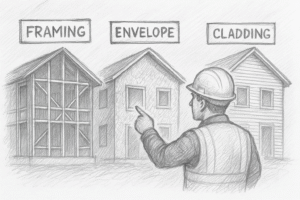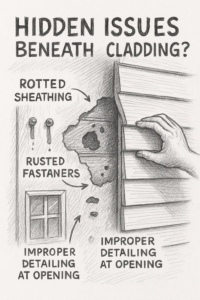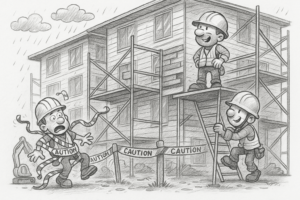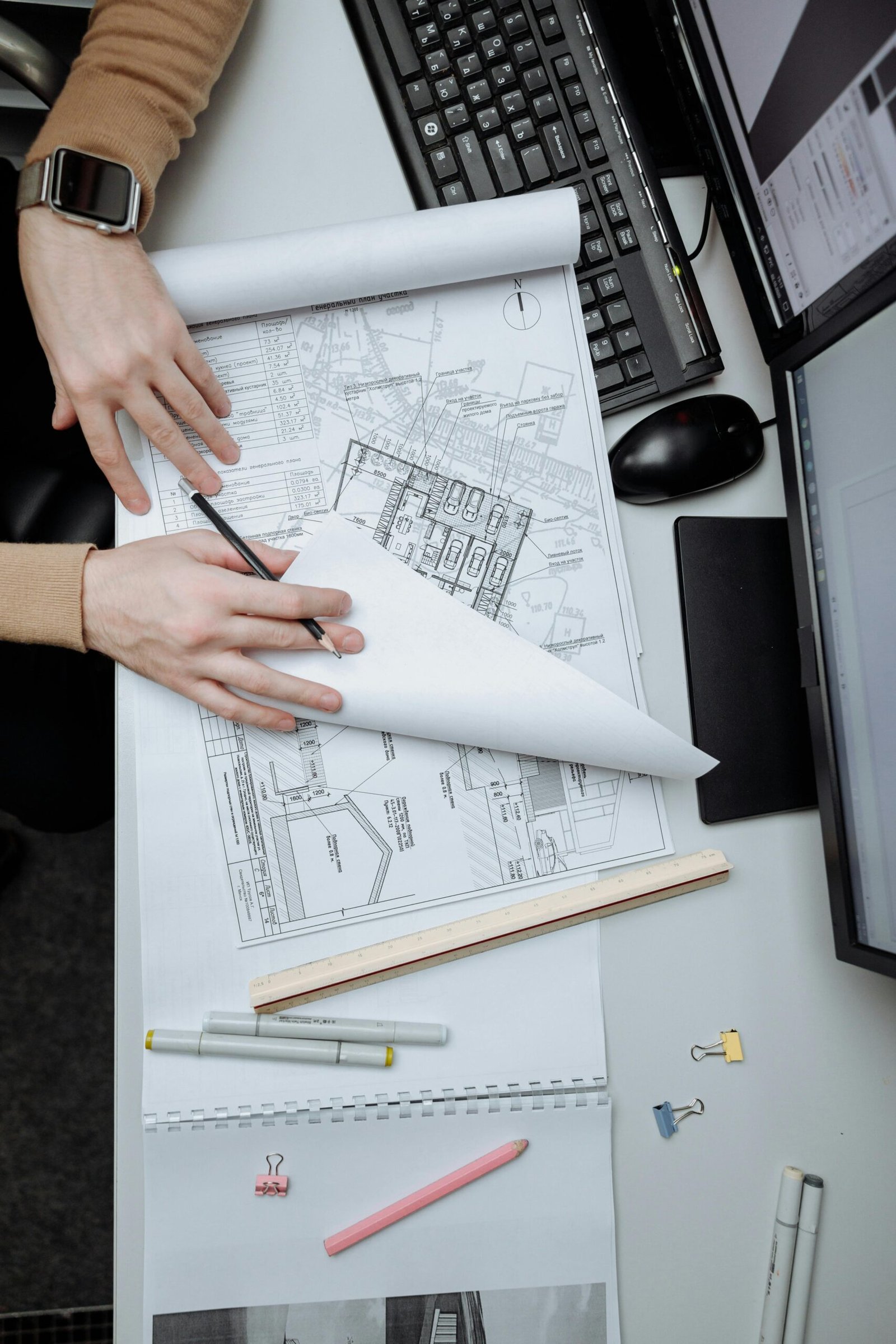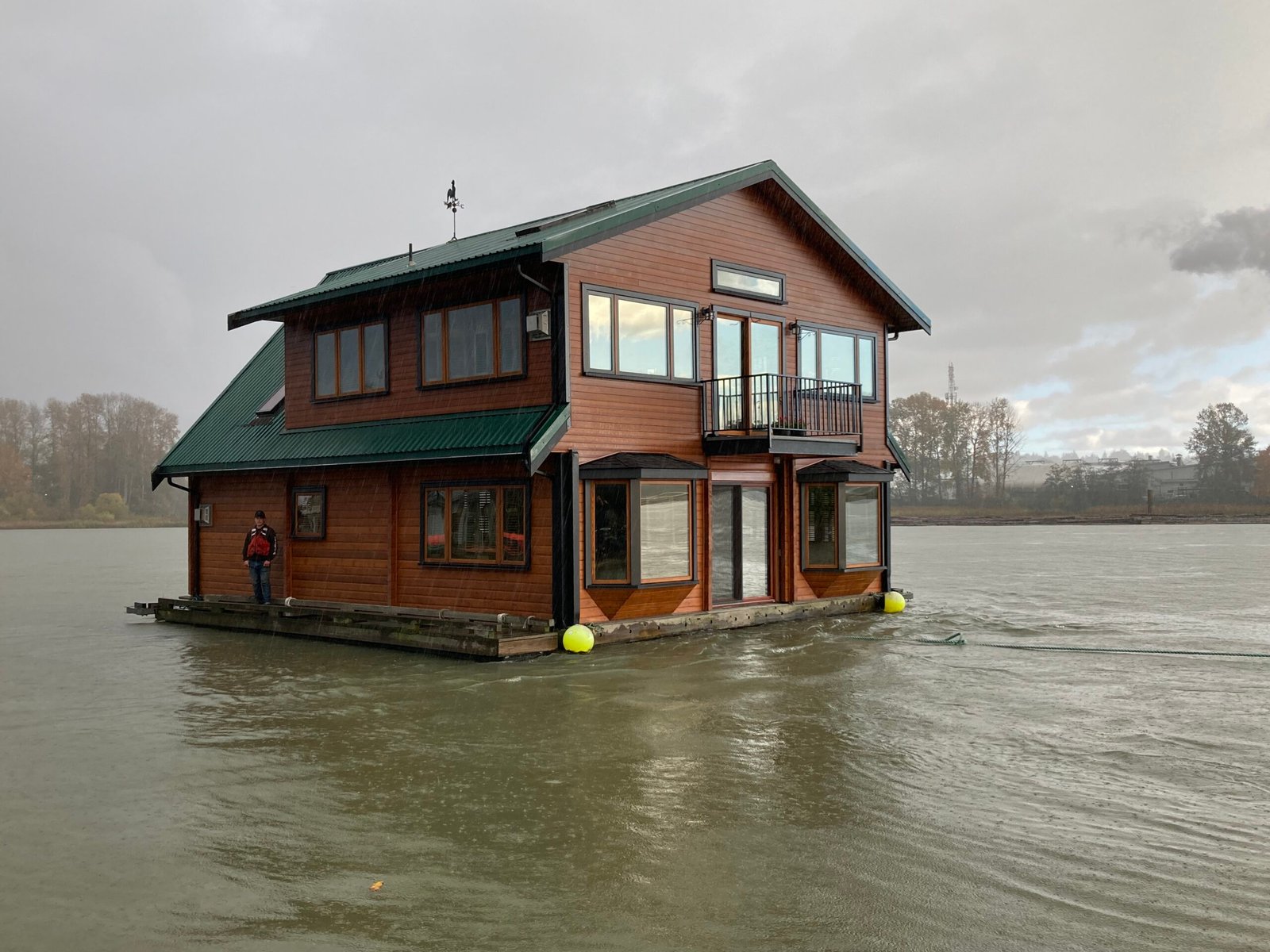Siding is one of the most important protective and aesthetic features of your home. While high-quality siding can last decades, it is not immune to wear and tear. Identifying the signs that it’s time to replace your siding can prevent costly damage and ensure your home remains energy-efficient, weather-resistant, and visually appealing.
Key Signs Your Siding Needs Replacement
1. Warping or Cracking
Warped or cracked siding panels are a clear indication of structural weakness. These issues can allow water to seep in, leading to hidden moisture damage, mold, and rot.
2. Moisture Damage or Rot
Signs of water infiltration, such as rot, mold, or mildew, suggest your siding is no longer providing a proper seal. Rotting wood siding, in particular, is a critical issue that demands immediate attention.
3. Fading or Discoloration
Fading can indicate that the siding’s protective coating has deteriorated. This leaves the material more vulnerable to UV rays, moisture, and temperature fluctuations.
4. Bubbling or Blistering
Bubbling or blistering on the surface of siding is often caused by trapped moisture or extreme heat exposure. This indicates that your siding is no longer protecting your home effectively.
5. High Energy Bills
Rising heating or cooling costs can suggest that your siding is no longer insulating your home properly. Energy-efficient siding, combined with modern building wraps, can dramatically improve your home’s thermal performance.
6. Frequent Maintenance
If you find yourself constantly repainting or repairing your siding, it may be more cost-effective to invest in a replacement.
7. Pest Damage
Holes, gnaw marks, or signs of infestation can compromise the siding’s integrity and lead to further structural issues.
8. Loose or Missing Panels
Siding that has become detached or is missing entirely no longer provides protection against the elements, leaving your home exposed to moisture and drafts.
Maintenance Tips to Prolong Siding Lifespan
Proper care can extend the life of your siding and keep it looking its best for years:
- Inspect Regularly: Check for cracks, rot, and other damage at least twice a year, particularly after harsh weather.
- Clean Annually: Use a gentle cleaning solution and a soft brush or low-pressure washer to remove dirt, mold, and mildew.
- Repaint or Seal When Needed: Wood siding, in particular, may require periodic repainting or sealing to maintain its protective barrier.
- Repair Minor Damage Promptly: Address small issues like loose panels or caulk failures before they become major problems.
- Trim Nearby Vegetation: Ensure that trees, bushes, and vines are not rubbing against your siding, which can cause scratches or moisture retention.
Why Early Action Matters
Ignoring siding problems can lead to more extensive damage to your home’s structure, including mold growth, compromised insulation, and even foundation issues. Additionally, replacing siding at the right time can enhance your home’s curb appeal and increase its market value.
How Lynx Siding Can Help
At Lynx Siding, we understand the importance of siding in protecting and beautifying your home. We offer a wide range of durable and aesthetically pleasing siding options, including cedar, metal, fiber cement, stucco, stone, and brick veneer. Our skilled team specializes in identifying problems and providing tailored solutions to ensure your home remains safe, efficient, and stunning.
Conclusion
Recognizing the signs of aging or damaged siding is the first step toward maintaining your home’s integrity. Regular maintenance and timely replacement can save you money and ensure your home remains a source of pride. If you’re unsure about the state of your siding, contact Lynx Siding today for a professional assessment and a free quote. Protect your home with siding you can trust!




